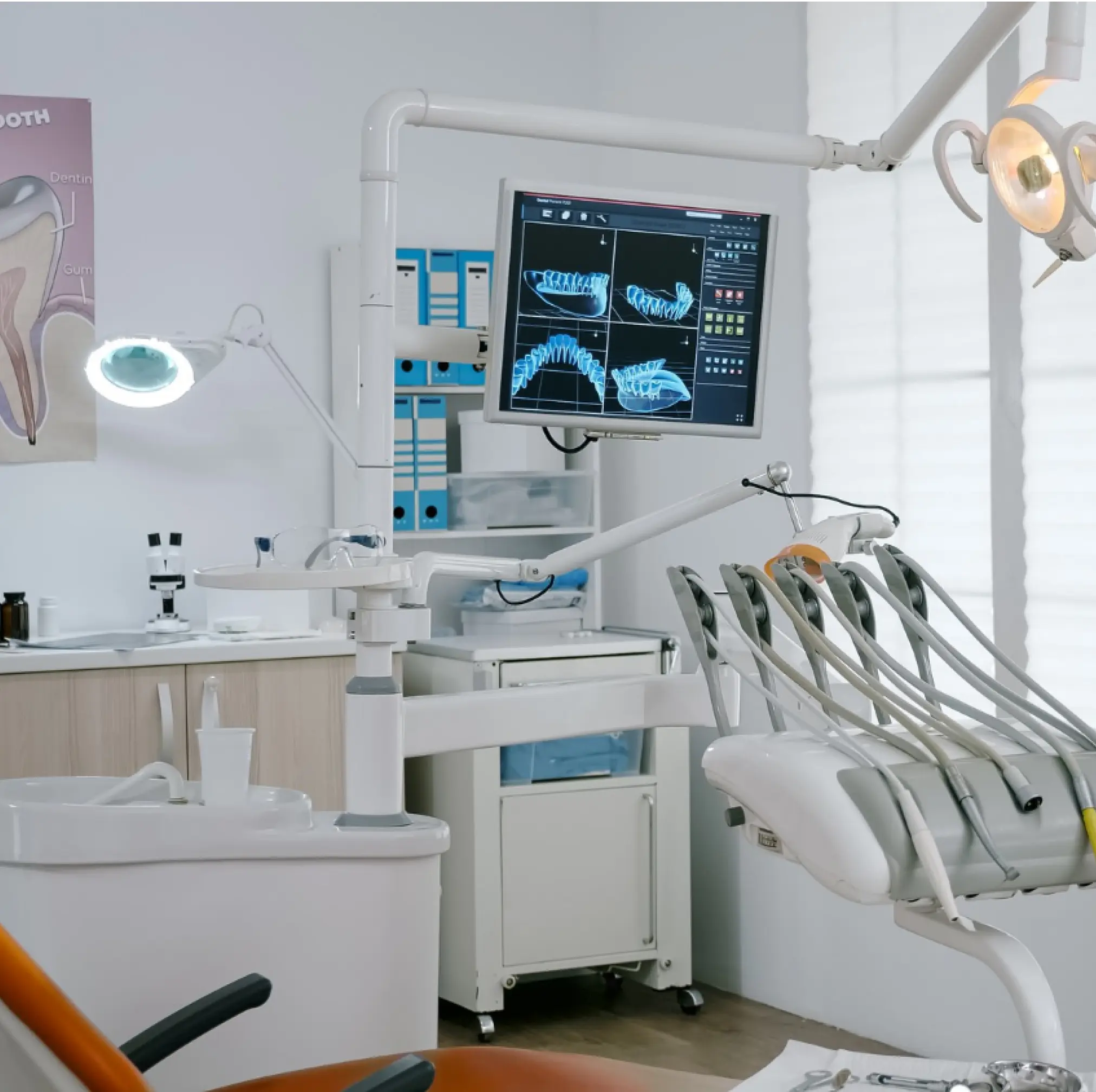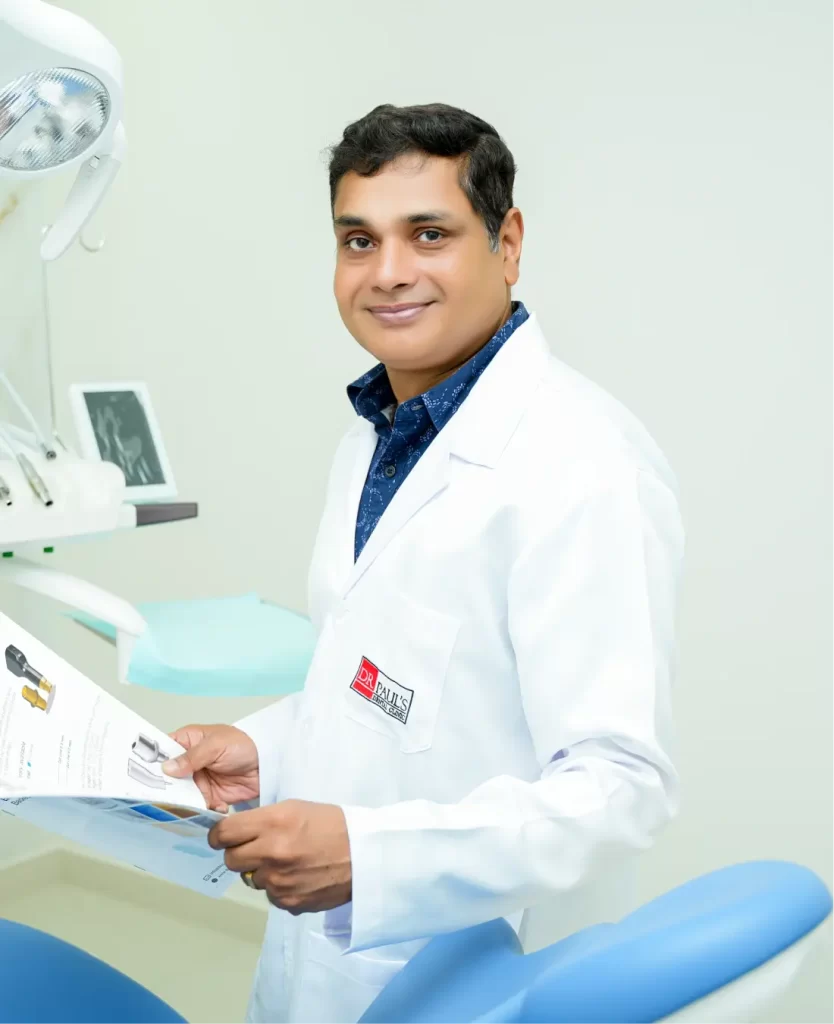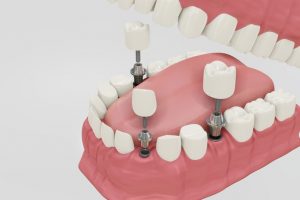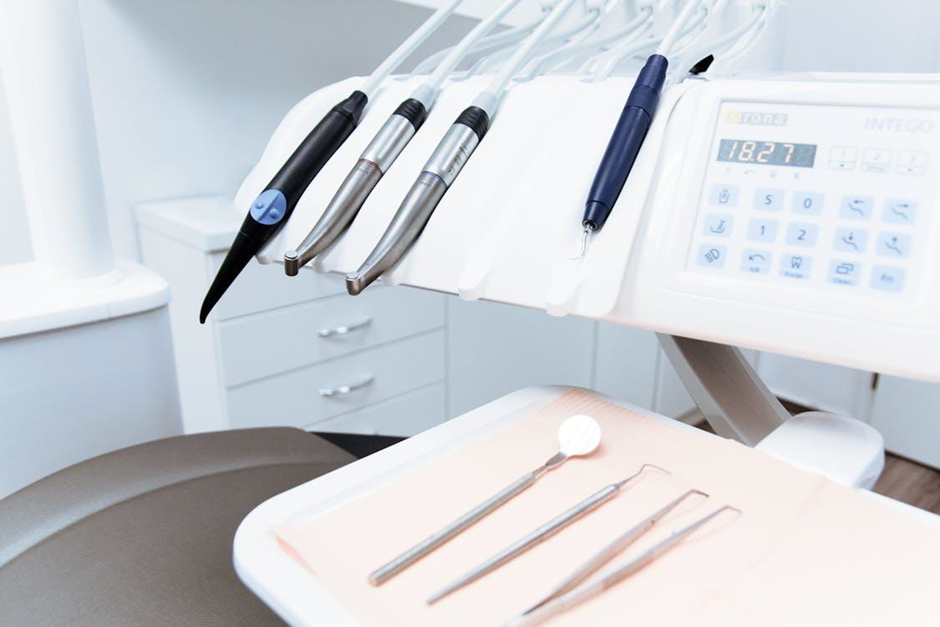Dental Implant Types? All you need to know
Dental Implants

Dental Implant Types?
Dental implants are meant to replace natural teeth that are missing or lost with an artificial tooth. Dental implant types vary depending on the way they can be placed.
What Is A Dental Implant?
A dental implant is a prosthesis that is used to replace natural teeth when they are missing from the
dental arch. They are made out of biocompatible material that incorporates and embeds itself in the jaw bone and stabilizes itself. It provides a biting force that is almost 80 to 90 percent that of natural teeth, and other than the way that implants attach themselves to bone there is hardly any difference between the two.
Implants have revolutionized dentistry and have improved the quality of life for geriatric patients ten-fold. It is a genius invention that has a high success rate and is being used all over the world.
Parts Of A Dental Implant
A basic dental implant consists of three parts:
1. The crown
The crown replaces the natural tooth that we can see in our mouth.
2. The abutment
The abutment is the bit that connects the crown with the screw
3. The screw
The screw replaces the natural root which holds the tooth in place
What Causes Missing Teeth?
â— Fractured tooth
â— Trauma or blow to the face
â— Grossly decayed tooth
â— Failed root canal treatment
â— Congenitally absent tooth
What Are The Different Types Of Dental Implants?
Dental implants in Dubai can be classified according to the following types:
Endosteal Implants
These are the most common type of implants in which the root portion of the implant or the titanium screw integrates with the jaw bone. This incorporates the process of osseointegration that causes the bone cells to grow around the screw and secures it within itself. This process takes about three months to complete. This type of implant is the most common one that is used today.
Subperiosteal Implants
This is the treatment option that is chosen by patients who don’t have enough bone height available to stabilize the implant and are not comfortable getting a bone augmentation procedure done. In these patients, a metal framework is placed just above the jaw bone but beneath the gum margin to stabilize the implant.
Zygomatic Implants
This is a rare and complicated implant procedure that is not used very frequently. This involves
the placement of the implant on the cheekbone rather than the jawbone. This method is used when there is not enough jaw bone available and the patient is not a good candidate for bone augmentation or
refuses the procedure.
Immediate Placement
This is a single-day procedure in which the implant is immediately loaded into the socket of a freshly extracted tooth. This is a preferred option by many patients who don’t want to wait for four months for the completion of the implant, but it involves risk as the implant still takes the same amount of time to integrate itself. During this time, the tooth must be kept out of occlusion, and the patient must be on a strict soft diet. A temporary tooth is placed on the implant which is only for show and not for use until the implant has cooked inside the bone and is ready to be loaded with the permanent crown.
This type of implant procedure is more suited to the maxilla as it involves decreased load in these areas. While it is an attractive option due to decreased surgical procedures, one-time anesthesia, and short completion time, not everyone is a candidate for this kind of implant. Your implantologist can guide you better on what factors would be suitable for this kind of implant procedure.
One-Stage Implant
This type of implant involves the placement of an implant that is longer. One end fuses into the bone while the other sticks out of the gum margin. The gums grow around the open end of the implant at the top, and this bit remains uncovered until the implant is ready for crown placement. In this type of implant, a second procedure is not required to cut the gum and expose the implant to place the abutment for crown placement. The crown can be directly loaded onto the implant.
Two-Stage Implant
This type of implant is shorter and is buried entirely under the gum margin. It remains protected from the oral cavity environment and reduces the chances of infection around the implant. After 3-4 months, once the implant has integrated itself and is ready for loading, the gum is cut and the implant is exposed to place the abutment. This is allowed to heal for 2 more days after which the impression is taken for a permanent crown, and then the new crown is placed over the implant. This is a long but safe procedure and involves the least amount of risk of the implant failing.
What Causes The Implant To Fail
The most common cause of the failure of an implant is a lack of dental hygiene. While implant crowns do not decay as natural teeth do, they can get an infection called peri-implantitis which can cause a crater-like depression to form under the implant infecting the bone and causing the implant to become mobile and fail.
Post-implant care is critical; regular professional cleanings, proper brushing, and flossing techniques are essential to maintain implants. With good care, your implants can last you your entire life.
Other conditions that can cause implants to fail are:
â— Uncontrolled diabetes
â— Osteoporosis
â— Osteoradionecrosis is caused by radiation to the head and neck region
â— Smoking
â— Poor dental hygiene
The Bottom Line
Dental implants are a great way to restore tooth function and can extend and improve the quality of life in the older population. Depending on the medical status of the patient as well as their particular case, an implantologist can decide which type of implant is best suited for them.
If you are considering getting dental implants done, it is best to consult with the best implantologists in Dubai. Schedule an appointment with one of our expert team of professionals at Dr Paul’s Dental Clinic and get your consultation done today.
Also Read : Learn about the situations where dental implants may not be suitable in our blog on Who Cannot Get Dental Implants ?.
Book an Appointment With Your Doctor NOW!
Ready for a brighter smile? Schedule your appointment with Dr. Paul’s Dental Clinic today and experience exceptional dental care.



 Dr. Gopalakrishnan Harikrishnan
Dr. Gopalakrishnan Harikrishnan 


